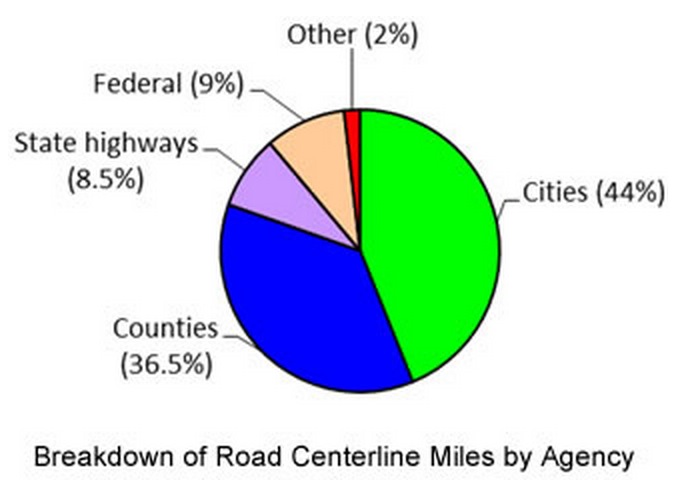SAVE CALIFORNIA STREETS
Executive Summary
California’s local street and road system continues to be in crisis.
 Every trip begins on a city street or county road. Whether traveling by bicycle, bus, rail, truck or family automobile, Californians need a reliable and well-maintained local street and road system. Unfortunately, these continue to be challenging times for our street and road system due to increased demand and unreliable funding. There is a significant focus on climate change and building sustainable communities, yet sustainable communities cannot function without a well-maintained local street and road system. The need for multi-modal opportunities on the local system has never been more essential. Every component of California’s transportation system is critical to providing a seamless, interconnected system that supports the traveling public and economic vitality throughout the state.
Every trip begins on a city street or county road. Whether traveling by bicycle, bus, rail, truck or family automobile, Californians need a reliable and well-maintained local street and road system. Unfortunately, these continue to be challenging times for our street and road system due to increased demand and unreliable funding. There is a significant focus on climate change and building sustainable communities, yet sustainable communities cannot function without a well-maintained local street and road system. The need for multi-modal opportunities on the local system has never been more essential. Every component of California’s transportation system is critical to providing a seamless, interconnected system that supports the traveling public and economic vitality throughout the state.
The first comprehensive statewide study of California’s local street and road system in 2008 provided critical analysis and information on the local transportation network’s condition and funding needs. Conducted biennially, the needs assessment provides another look at this vital component of the state’s transportation system and once again finds a significant funding shortfall.
The 2014 study sought answers to important questions: What are the current pavement conditions of local streets and roads? What will it cost to repair all streets and roads? What are the needs for the essential components to a functioning system? How large is the funding shortfall? What are the solutions?
Responsible for almost 81 percent of the state’s roads, cities and counties find this study of critical importance for several reasons. While federal and state governments’ regularly assess their system needs, no such data existed for the local component of the state’s transportation network prior to the initial study conducted in 2008. Historically, statewide transportation funding investment decisions have been made without local pavement condition data. This biennial assessment provides a critical piece in providing policy makers with a more complete picture of California’s transportation system funding needs.
 The goal is to use the results to educate policymakers at all levels of government about the infrastructure investments needed to provide California with a seamless, multi-modal transportation system. The findings provide a credible and defensible analysis to support a dedicated, stable funding source for maintaining the local system at an optimum level. The study also provides the rationale for the most effective and efficient investment of public funds, potentially saving taxpayers from paying significantly more to fix local streets and roads into the future.
The goal is to use the results to educate policymakers at all levels of government about the infrastructure investments needed to provide California with a seamless, multi-modal transportation system. The findings provide a credible and defensible analysis to support a dedicated, stable funding source for maintaining the local system at an optimum level. The study also provides the rationale for the most effective and efficient investment of public funds, potentially saving taxpayers from paying significantly more to fix local streets and roads into the future.
This update surveyed all of California’s 58 counties and 482 cities in 2014. The information captured data from more than 99 percent of the state’s local streets and roads – a level of participation that makes clear the local interest in addressing the growing problems of crumbling streets and roads.
Download full version (PDF): California Local Streets & Roads Needs Assessment 2014 Update
About Save California Streets
www.savecaliforniastreets.org
This study was sponsored by the cities and counties of California and managed by the Metropolitan Transportation Commission (MTC). The Oversight Committee is composed of representatives from the following: League of California Cities (League), California State Association of Counties (CSAC), County Engineers Association of California (CEAC), California Regional Transportation Planning Agencies (RTPA), California Rural Counties Task Force (RCTF), Metropolitan Transportation Commission (MTC), County of Los Angeles, Department of Public Works.
Tags: CA, California, Save California Streets






 RSS Feed
RSS Feed